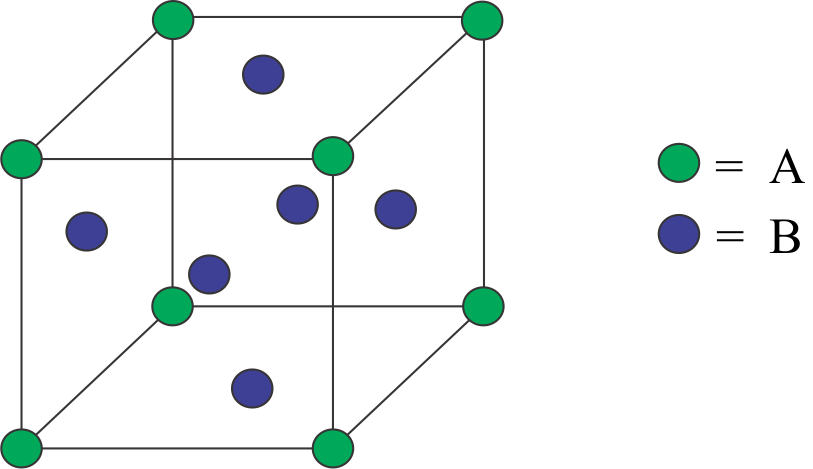
An
A.
B.
C.
D.
Answer
490.8k+ views
Hint: The ordered structure that has occurred from the intrinsic nature of the constituent particles or atoms to form symmetric patterns of the crystal structure that will repeat along all the dimensions are known as a unit cell. The numerous unit cells together form a crystal lattice. Each lattice point is being occupied by one particle or atom.

Complete step by step answer: The
The corner atoms are being shared by eight more-unit cells. Thus, the contribution of each corner atom to a one-unit cell
Similarly, the face atoms are being mutually shared by two-unit cells thus we can say that the contribution of each face atom would be
Therefore, we can say that the
Now, if an
Volume of the unit cell =
Volume of
Molar volume =
Hence, the answer is option (D).
Note: On the basis of arrangements of atoms in space there can be different types of lattice structures. Mainly lattice structure can be fcc, bcc and hcp. In

Complete step by step answer: The
The corner atoms are being shared by eight more-unit cells. Thus, the contribution of each corner atom to a one-unit cell
Similarly, the face atoms are being mutually shared by two-unit cells thus we can say that the contribution of each face atom would be
Therefore, we can say that the
Now, if an
Volume of the unit cell =
Volume of
Molar volume =
Hence, the answer is option (D).
Note: On the basis of arrangements of atoms in space there can be different types of lattice structures. Mainly lattice structure can be fcc, bcc and hcp. In
Latest Vedantu courses for you
Grade 10 | CBSE | SCHOOL | English
Vedantu 10 CBSE Pro Course - (2025-26)
School Full course for CBSE students
₹34,850 per year
Recently Updated Pages
Master Class 12 Business Studies: Engaging Questions & Answers for Success

Master Class 12 English: Engaging Questions & Answers for Success

Master Class 12 Social Science: Engaging Questions & Answers for Success

Master Class 12 Chemistry: Engaging Questions & Answers for Success

Class 12 Question and Answer - Your Ultimate Solutions Guide

Master Class 11 Economics: Engaging Questions & Answers for Success

Trending doubts
Draw a labelled sketch of the human eye class 12 physics CBSE

a Tabulate the differences in the characteristics of class 12 chemistry CBSE

Which one of the following is a true fish A Jellyfish class 12 biology CBSE

Why is the cell called the structural and functional class 12 biology CBSE

Differentiate between homogeneous and heterogeneous class 12 chemistry CBSE

Write the difference between solid liquid and gas class 12 chemistry CBSE




